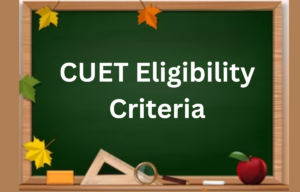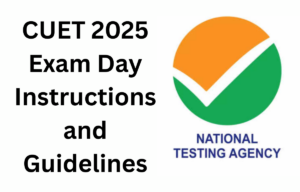Table of Contents
To do well in the CUET UG economics exam, students need to know the syllabus well. It’s important for them to understand what topics will be covered in the Common University Entrance Test for undergraduate programs. By focusing on the syllabus and looking at previous exams, students can prepare better and feel more confident when taking the test.
All the students who are willing to appear in the CUET UG exam must download the syllabus and are also advised to download the CUET UG previous year’s papers, as reviewing past exam questions can help them see what kind of questions might come up. The CUET Syllabus 2025 for Economics comprises all the important topics and the previous year’s questions that will help the students to prepare well for the CUET 2025 examination.
CUET Economics Exam 2025
The CUET UG Economics exam is held for students who are willing to pursue their career in UG courses such as B.A in Economics, B.Sc in Economics. B.Com (Hons.). All the students are informed that from now the NTA has decided to conduct the CUET UG exam in hybrid mode i.e., both pen and paper mode. The exam helps universities select students fairly, based on their performance in the test.
Students who pass the exam can apply to many universities for admission to their different programs. The exam is important because it opens the door to studying economics, a subject that deals with how people use resources and make decisions in society. Preparing well for CUET UG can help students achieve their goals of studying at good universities.
CUET Economics Syllabus 2025
The CUET UG Economics syllabus introduces students to the basics of how the economy works. It covers important topics like supply, demand, how prices are decided, and how markets operate. Students also learn about national income, banks, money, and the government’s role in managing the economy. The syllabus also explores big topics like economic growth, poverty, and the global economy. It is divided into two parts:
- Microeconomics – This focuses on individuals and businesses, like how people make choices and how companies set prices.
- Macroeconomics – This looks at the bigger picture, like the overall economy, government policies, and international trade.
CUET UG Economics Syllabus: Overview
- Introduction to Microeconomics
- Consumer Behaviour and Demand
- National Income and Related Aggregates — Basic Concepts and Measurement
- Determination of Income and Employment
- Money and Banking
- Government Budget and the Economy
- Balance of Payments
- Development Experience (1947-90) and Economic Reforms since 1991
- Current challenges facing the Indian Economy
- Development Experience of India
CUET Economics Unit Wise Syllabus
The CUET UG Economics syllabus is divided into 10 different units. It includes basic concepts like what economics is, how people make decisions with limited resources, and how economies grow. You will learn about demand and supply, how prices are decided, and different market types.
There is also a unit on national income, where you’ll study how a country’s wealth is measured. In addition, there is a section on money, banking, and how governments manage the economy. Finally, you’ll explore international trade and India’s economic development. Each unit helps us understand how the economy works.
Unit 1: Introduction to Microeconomics
- What is microeconomics?
- Central problems
Unit 2: Consumer Behaviour and Demand
- Consumer’s Equilibrium: meaning and attainment of equilibrium through Utility Approach: One and two commodity cases.
- Demand: market demand, determinants of demand, demand schedule, demand curve, movement along and shifts in the demand curve, price elasticity of demand, measurement of price elasticity of demand – percentage, total expenditure, and geometric methods
Unit 3: National Income and Related Aggregates — Basic Concepts and Measurement
- Macroeconomics: meaning.
- Circular flow of income, concepts of GDP, GNP, NDP, NNP (at market price and factor cost).
- Measurement of National Income –Value Added method, Income method, and Expenditure method.
Unit 4: Determination of Income and Employment
- Aggregate demand, aggregate supply, and their components
- Propensity to consume and propensity to save (average and marginal)
- Meaning of involuntary unemployment and full employment
- Determination of income and employment: two-sector model
- Concept of investment multiplier and its working
- Problems of excess and deficient demand
- Measures to correct excess and deficient demand – availability of credit, change in government spending
Unit 5: Money and Banking
- Money: meaning, evolution, and functions
- Central Bank: meaning and functions
- Commercial banks: meaning and functions
Unit 6: Government Budget and the Economy
- Government budget – meaning and its components
- Objectives of government budget
- Classification of receipts – revenue and capital; classification of expenditure – revenue and capital, plan and non-plan, and developmental and non-developmental
- Balanced budget, surplus budget, and deficit budget: meaning and implications
- Revenue deficit, fiscal deficit, and primary deficit: meaning and implications; measures to contain different deficits.
Unit 7: Balance of Payments
- Foreign exchange rate – meaning (fixed and flexible), merits and demerits; determination through demand and supply
- Balance of payments accounts – meaning and components
- A brief analysis of recent exchange rate issues
Unit 8: Development Experience (1947-90) and Economic Reforms since 1991
- A brief introduction of the state of the Indian economy on the eve of independence. Indian economic system and common goals of Five-year Plans.
- Main features, problems, and policies of agriculture (institutional aspects and new agricultural strategy), industry (IPR 1956; SSI – role & importance), and foreign trade.
Unit 9: Current challenges facing the Indian Economy
- Poverty – absolute and relative; Main programmes for poverty alleviation: A critical
- assessment;
- Human Capital Formation – How many people become resource; Role of human capital
- in economic development;
- Rural development: Key issues – credit and marketing – role of cooperatives; agricultural
- diversification;
- Employment: Growth and changes in workforce participation rate in formal and informal
- sectors; problems and policies
- Infrastructure: Meaning and Types: Case Studies: Health: Problems and
- Policies – A critical assessment;
- Sustainable Economic Development: Meaning, Effects of Economic Development on
- Resources and Environment, including global warming
Unit 10: Development Experience of India
- A comparison with neighbours
- India and Pakistan
- India and China
- Issues: economic growth, population, sectoral development and other Human
- Development Indicators
CUET Economics Syllabus 2025 PDF Free Download
The National Testing Agency (NTA) has made the CUET Economics Syllabus for 2025 available on its official website. This will help students who are preparing for the exam by giving them clear guidelines on the topics to cover. Students can either visit the NTA website directly to download the syllabus or use the provided link to get the CUET Economics Syllabus 2025 PDF for free. This ensures that students can focus on the right areas in their preparation and have a clear path to follow as they get ready for the exam.
Preparation For CUET UG Economics
Here are some easy tips to help you prepare for the upcoming Common University Entrance Test (CUET) for the 2025-26 session. These tips will guide you in studying better and feeling more confident. By following them, you can manage your time well, focus on important topics, and practice regularly to improve your performance in the exam. Keep calm and stay dedicated to your preparation.
- Understand the Syllabus Thoroughly
Go through the official CUET UG Economics syllabus. Break it down into topics like microeconomics, macroeconomics, and the Indian economy, and focus on important concepts like demand, supply, market structures, national income, etc. Make sure to know the weightage of different sections to prioritize accordingly.
- Focus on NCERT Textbooks
NCERT books (Class 11 and 12) are essential for building your foundation. These books provide a clear understanding of basic concepts, which are often tested in CUET. Pay special attention to diagrams and definitions.
- Practice Previous Year Papers and Mock Tests
Solving previous year papers will help you get familiar with the exam pattern and time management. Take regular mock tests to assess your preparation level and work on areas where you’re weak. Practice under timed conditions.
- Revise Regularly
Economics has a lot of concepts, theories, and graphs. Ensure you revise them regularly to retain information. Create a revision schedule for each topic, and revisit difficult concepts frequently.
- Stay Updated with Current Affairs
The CUET UG Economics exam might include questions on current economic issues, especially in the context of the Indian economy. Read newspapers and follow economic developments to stay updated on policies, trends, and significant economic events.


 CUET Eligibility Criteria 2025: Age Limi...
CUET Eligibility Criteria 2025: Age Limi...
 CUET UG 2025: Most Important 50 Question...
CUET UG 2025: Most Important 50 Question...
 CUET 2025 Exam Day Instructions and Guid...
CUET 2025 Exam Day Instructions and Guid...



